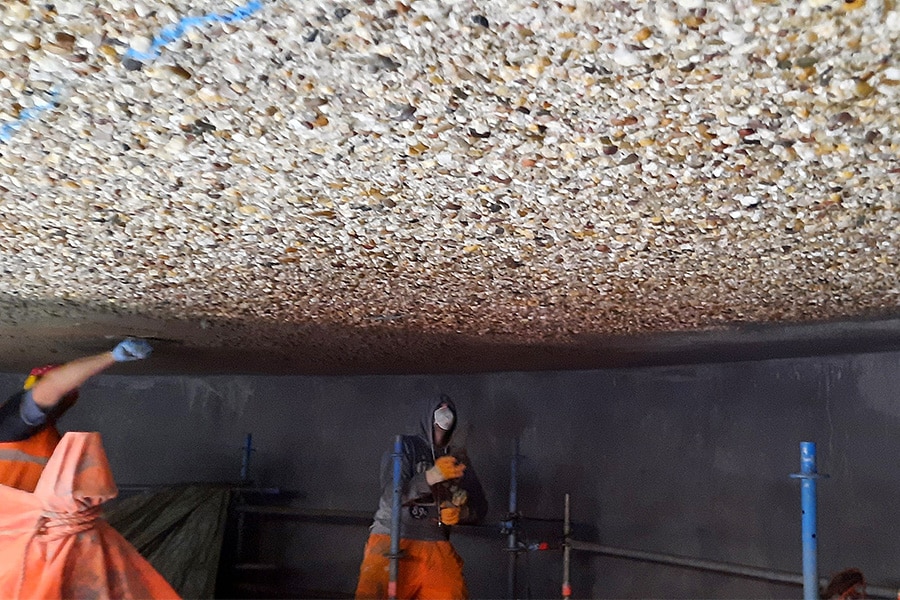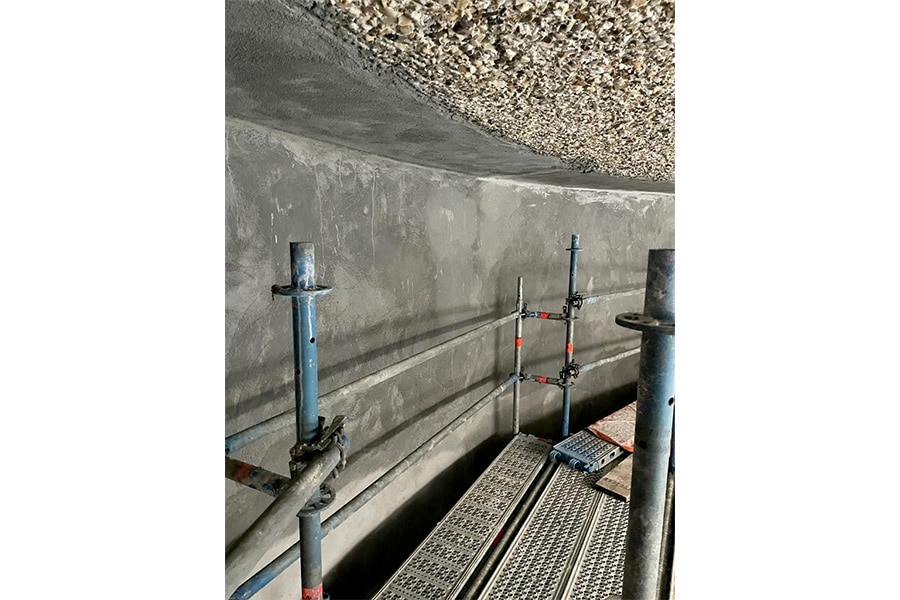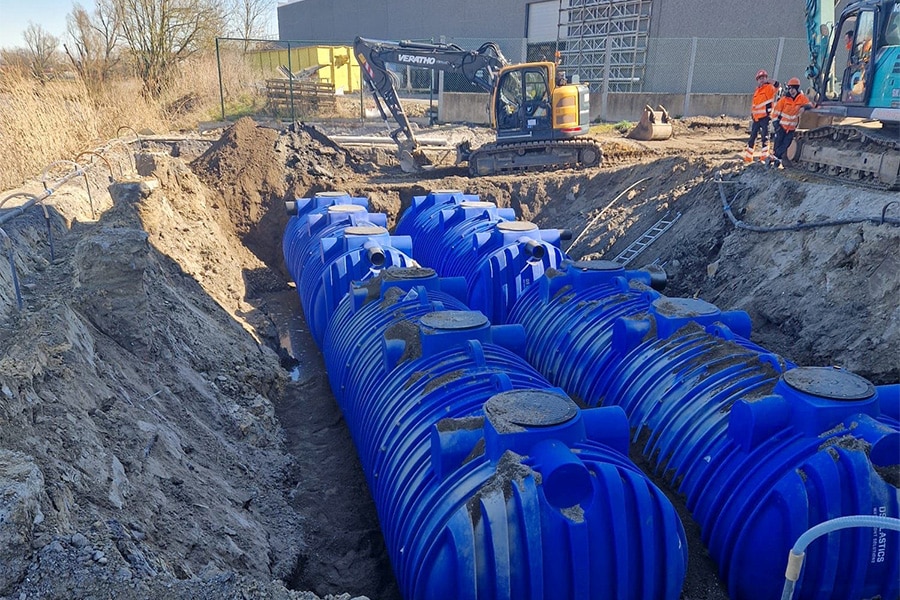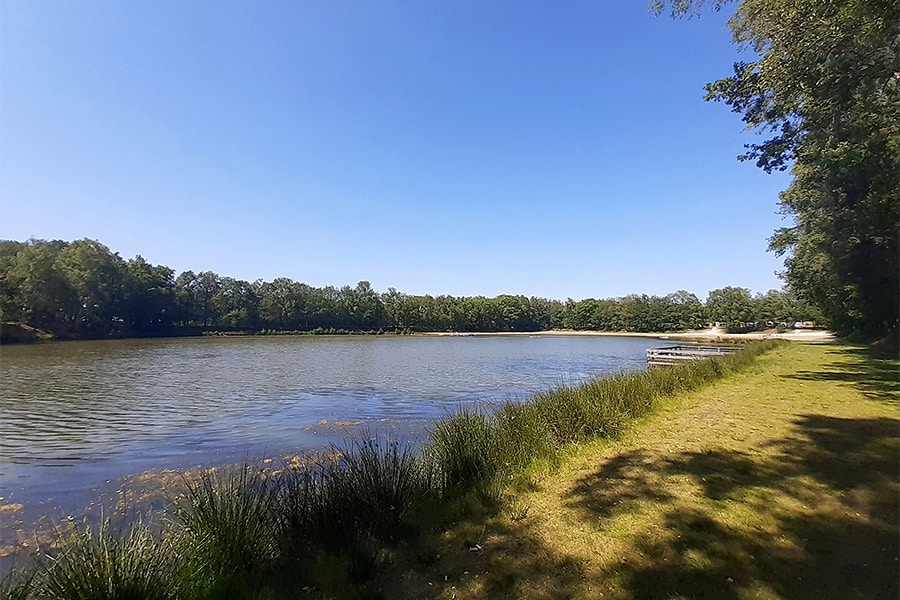
Durable concrete repair with wet spray concrete
Before upgrading the existing concrete tank silos at RWZI Echten to the new sludge digestion plant, the first task was to repair the concrete damage. This can be done in several ways. Leggedoor, specialists in concrete maintenance, chose the method of wet spray concrete. A sustainable way of concrete repair with less 'rebound' and no dust nuisance.
The concrete walls of two tank silos at RWZI Echten were quite corroded. "The concrete had eroded considerably in several places as a result of the H2S gases released during the fermentation process," says Dennis Leggedoor. "In addition, there was damage around the water line. A chemical reaction occurring in the tanks caused the cement to come loose. We were commissioned by Van Hattum and Blankevoort to inspect the walls and ceiling of the tanks, remediate the concrete damage down to the load-bearing substrate and repair it with spray concrete."

Spray concrete
Spray concrete can be applied in two ways: according to a dry or a wet technique. "With the dry technique, the concrete mixture is mixed only at the nozzle. This is usually accompanied by dust nuisance. With wet spray concrete, you have much less dust nuisance because the repair mortar is already created before it enters the pump. Also, with wet spray concrete, there is hardly any "rebound," or recoil of the mortar against the surface. It sticks better and that also makes it the more sustainable choice because there is less waste," Dennis clarifies. Accessibility to the walls and ceiling in one of the tanks was still an issue for Leggedoor. "We solved that by fully scaffolding one tank and working in the other tank from an aerial platform."

R4 repair mortar
In both tanks, Leggedoor applied the repair mortar in a layer thickness of about 30 millimeters. "This was also necessary, given the erosion that had continued halfway through the 32-millimeter soil grain. So the tanks became slightly smaller in diameter after the concrete repair," says Dennis with a laugh who adds that a standard R4 repair mortar was used. Leggedoor is rightfully a specialist in concrete maintenance and repair. "We now have 45 years of experience in that field and know the ropes. We know where the weak spots are in these types of projects and how to solve them as efficiently as possible. In this case, the biggest challenge was accessibility, especially at the closed tank. Here, for example, we worked with a gatekeeper and special equipment was deployed to cover the greater distances."
Leggedoor is called upon with some regularity for these types of projects. "We operate in infra and residential construction and specialize in sealing, repairing, protecting and reinforcing concrete structures. The latter is currently a hot topic. We apply different flavors in this: applying external reinforcement via steel with sprayed concrete or by means of carbon laminates. An interesting technique in view of Rijkswaterstaat's large-scale replacement and renovation task."



